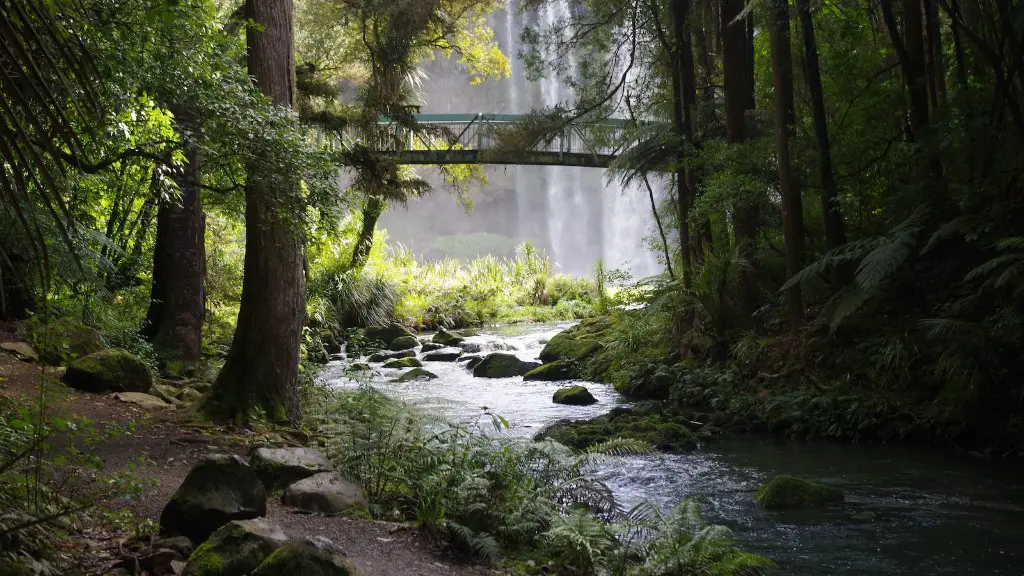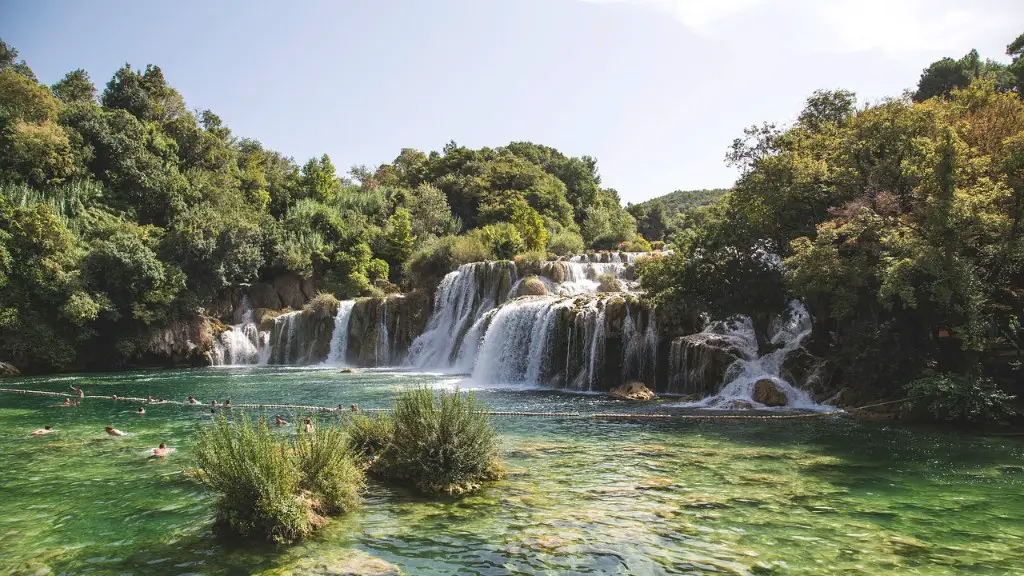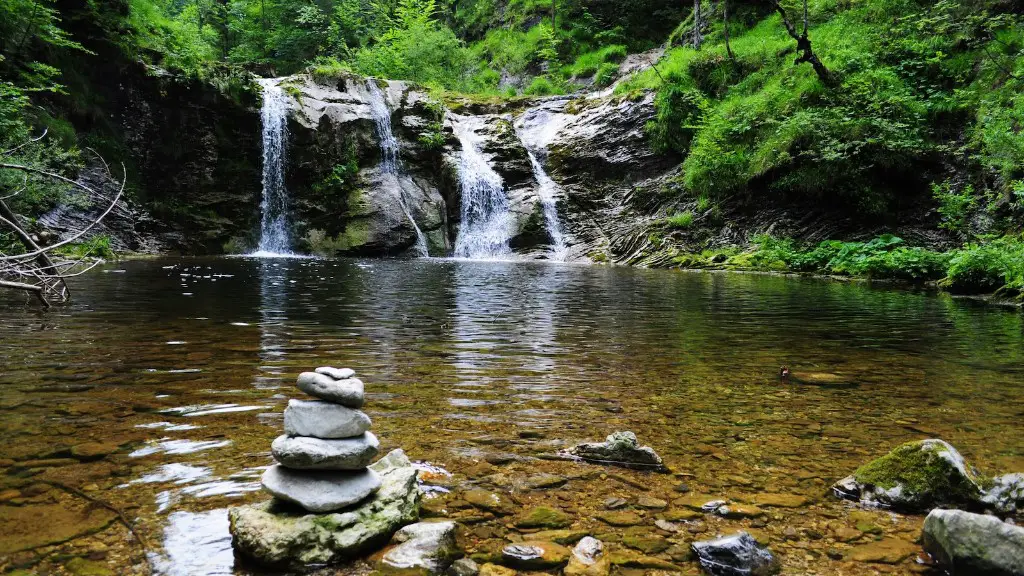Background of the Yangtze River
The Yangtze River, or Yangzi, is the longest river in Asia and the third longest river in the world. Flowing from west China, over 6,300 kilometers in length, into the East China Sea, it has been an essential artery of transportation and commerce in China for over 2,000 years.
The river is divided into three stages – the upper part, middle, and lower part – each with unique terrain and climate. Its headwaters begin high in the glacier-covered mountains of western China, plunging down the eastern plateaus as it makes its way eastward. Along the middle part of the river, it flows through the much-photographed Three Gorges, a dramatic mountain canyon area necessary for navigation and flood control. The mainstream Yangtze meets up with the much shorter Daning and Han rivers before emptying into the East China Sea.
A Source of Nutrients for China
The Yangtze River is a major provider of water and nutrients to China, playing a significant role in the country’s food production. Over hundreds of years, China has developed a complex irrigation system, tapping into the river to transport water to the vast farmlands that line its banks. In addition to providing vital water and fertilizer, the Yangtze’s high sediment content also increases the fertility of the soil, ensuring dependable crop production for many of China’s citizens.
The river’s vital importance to food production has only grown with time. As the population of China continues to rise, food production has similarly had to increase, placing even more reliance on the Yangtze and its resources.
Dam Construction Projects
In response to the need for productive farmland, the Chinese government has undertaken ambitious dam construction projects along the Yangtze in an effort to control flooding and generate much-needed renewable energy. In fact, the Three Gorges Dam, located near the middle swath of the river, is the largest hydroelectric dam in the world. While the dam has had major economic benefits and provided energy to a large portion of China’s population, it has caused serious environmental concern. The dam has blocked a major migratory pathway of the upstream fish, significantly reducing their numbers and threatening the biodiversity of the area.
The effects of the Three Gorges Dam and the numerous other dams located along the banks of the Yangtze have proven controversial, and have drawn criticism from environmental groups, both at home and abroad. Some have even argued that the Three Gorges Dam project has had detrimental effects on the region’s inhabitants with many being relocated as part of the construction process. Others have argued that the case is more complex than critics present. Speakers from both sides of the debate have weighed in, making the ongoing conversation an interesting one to follow.
Major Industry Along the Yangtze
The Yangtze has long been a major artery for Chinese commerce, with the river’s presence providing the foundation for a number of major industries. A number of ports are located along the river, providing transportation access from inland China to the rest of the world. In addition, the rich geology of the river has enabled major deposits of gold and other precious minerals to be exploited.
In more modern times, the Yangtze has also been a major provider of renewable energy through the use of hydroelectric dams. Additionally, there is a substantial shipping industry along the river with large number of freight vessels carrying goods up and down its length. All of this activity means that the Yangtze has become an important source of employment and economic activity, and has had a positive effect on the overall economy of current day China.
Tourism Along the River
In recent years, the Yangtze River has also become something of a tourist destination with more and more people coming to experience its beauty for themselves. The natural beauty of the river combined with its rich history and cultural heritage makes is a must-visit destination for many. Tourists can take part in a number of leisure activities along the river, from kayaking and river cruises to exploring local cities and towns.
The Yangtze is also home to a number of UNESCO World Heritage Sites located along its banks, making it a culturally significant destination. One of the most famous sites along the river is the Jiuzhaigou Valley, a picturesque rocky gorge that is renowned for its waterfalls, forests, and lakes. Other notable attractions include the majestically constructed Three Gorges Dam, the World Heritage-listed Mount Emei, and the famed Terra Cotta Warriors.
Environmental Challenges Facing the Yangtze
Unfortunately, the Yangtze river is not without its environmental problems. Pollution has been a growing issue for many years as industrial waste runoff and agricultural chemicals have been known to enter the river. This has had a major negative impact on aquatic life, leading to a sharp reduction in numbers of many species. Additionally, coastal erosion and sediment runoff from other water bodies has lead to water turbidity and land loss along the river’s estuary.
In an effort to combat the effects of pollution, many communities have enlisted the help of local volunteers to help clean the river. Education campaigns have also helped to spread awareness of ongoing environmental issues. Additionally, the Chinese Government has been working towards enacting extensive clean-up initiatives and reducing emissions.
The Role of the Yangtze in Chinese Culture
Over time, the Yangtze has become deeply embedded in Chinese culture and is often referenced in works of literature and art. The river is often a symbolic representation of the strength, perseverance, and determination of the Chinese people. This can be seen in the many stories and folktales that have been passed down through generations. As a symbol of the country’s long history and deep cultural heritage, the Yangtze often serves to remind people of the communal spirit of the Chinese people and their ongoing commitment to preserving the environment.
Environmental Protection Initiatives In Place
The Chinese government has devoted considerable effort and resources towards preserving the Yangtze River. A number of conservation initiatives have been implemented in an effort to combat the negative effects of pollution. Local initiatives aimed at reducing emissions, preserving wildlife habitats, and conserving habitats have been put into action. Additionally, there has been an increased focus on cleaner energy production through the expansion of hydroelectric and solar energy.
In addition to local initiatives, international conservation operations have also been enacted in order to preserve the river and its resources. The Yangtze River Basin has been designated as a UNESCO World Heritage site and designated as a Protected Area. This designation has helped to ensure that the river is properly maintained and protected for future generations.
Conclusion
As the longest river in Asia and one of the most important waterways in the world, the Yangtze River continues to play an essential role in Chinese culture and economy. By preserving its environment and resources, the river will maintain its vital importance, providing vital water and nutrients to an ever-growing population and serving as an important symbol of Chinese heritage.




